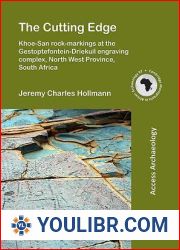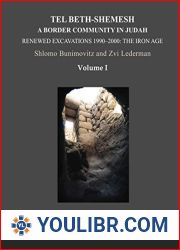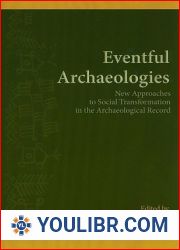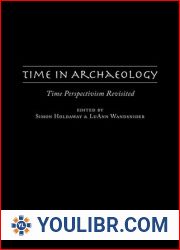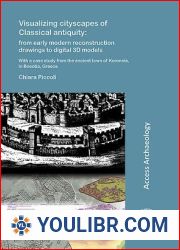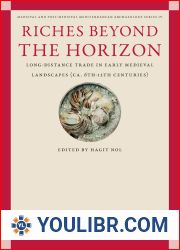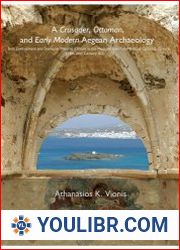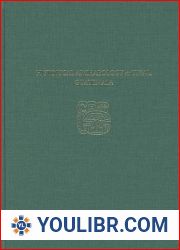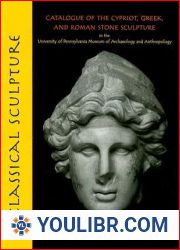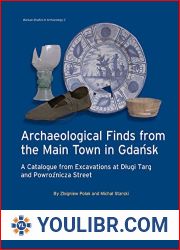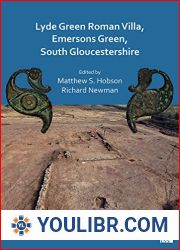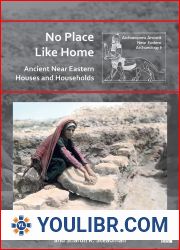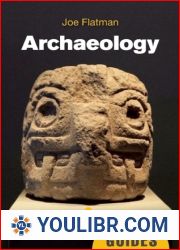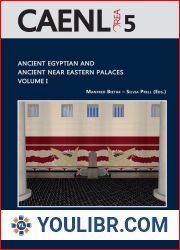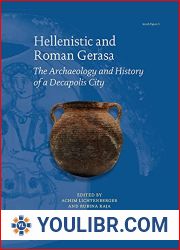
BOOKS - Opus Dei: An Archaeology of Duty

Opus Dei: An Archaeology of Duty
Author: Giorgio Agamben
Year: January 1, 2012
Format: PDF
File size: PDF 924 KB
Language: English

Year: January 1, 2012
Format: PDF
File size: PDF 924 KB
Language: English

Opus Dei: An Archaeology of Duty In "Opus Dei: An Archaeology of Duty Italian philosopher Giorgio Agamben delves into the origins and evolution of our moral concept of duty, tracing its roots back to Christian liturgy and exploring how it has shaped the modern ethical subject. Through a detailed examination of the New Testament, scholasticism, and papal encyclicals, Agamben uncovers the paradoxical figure of the priest, who becomes a pure instrument of God's power, sacrificing personal motives and character for the sake of fulfilling his duties. This paradoxical figure serves as the foundation for Agamben's argument that the Christian priest has become the model ethical subject, particularly in Kantian ethics. Agamben's investigation into the development of duty in Western philosophy reveals a tension between classical ontology and the Christian and modern ontology of being. He contrasts these two ontologies, arguing that the latter has led to a redefinition of duty as a means to control and regulate human behavior. In doing so, he provides a critical analysis of the role of duty in modernity and its implications for human survival and unity in a world torn apart by conflict. The book begins with an exploration of the New Testament, where Agamben identifies the origins of the concept of duty in the sacrifice of Christ. He then delves into the theological and philosophical developments of this concept throughout history, from scholasticism to modern papal encyclicals.
Opus Dei: An Archaeology of Duty In «Opus Dei: An Archaeology of Duty» Итальянский философ Джорджо Агамбен углубляется в истоки и эволюцию нашей моральной концепции долга, возводя ее корни к христианской литургии и исследуя, как она сформировала современный этический предмет. Посредством детального изучения Нового Завета, схоластики и папских энциклик Агамбен раскрывает парадоксальную фигуру священника, который становится чистым инструментом Божьей силы, жертвуя личными мотивами и характером ради выполнения своих обязанностей. Эта парадоксальная фигура служит основанием для аргумента Агамбена о том, что христианский священник стал образцовым этическим субъектом, особенно в кантовской этике. Исследование Агамбена о развитии долга в западной философии обнаруживает напряжение между классической онтологией и христианской и современной онтологией бытия. Он противопоставляет эти две онтологии, утверждая, что последняя привела к переопределению долга как средства контроля и регулирования человеческого поведения. При этом он дает критический анализ роли долга в современности и его последствий для выживания и единства людей в мире, раздираемом конфликтами. Книга начинается с исследования Нового Завета, где Агамбен определяет истоки понятия долга в жертвоприношении Христа. Затем он углубляется в богословские и философские разработки этой концепции на протяжении всей истории, от схоластики до современных папских энциклик.
Opus Dei : An Archaeology of Duty Dans « Opus Dei : An Archaeology of Duty » philosophe italien Giorgio Agamben approfondit les origines et l'évolution de notre conception morale du devoir en élevant ses racines à la liturgie chrétienne et en explorant comment elle a façonné un sujet éthique moderne. Par une étude détaillée du Nouveau Testament, de la scolastique et de l'encyclique papale, Agamben révèle la figure paradoxale d'un prêtre qui devient un instrument pur de la puissance de Dieu, sacrifiant ses motivations personnelles et son caractère dans l'exercice de ses fonctions. Cette figure paradoxale sert de base à l'argument d'Agamben selon lequel le prêtre chrétien est devenu un sujet éthique exemplaire, en particulier dans l'éthique cantonienne. L'étude d'Agamben sur le développement du devoir dans la philosophie occidentale révèle une tension entre l'ontologie classique et l'ontologie chrétienne et moderne de l'existence. Il oppose ces deux ontologies, affirmant que cette dernière a conduit à une redéfinition de la dette comme moyen de contrôle et de régulation du comportement humain. Ce faisant, il fournit une analyse critique du rôle du devoir dans la modernité et de ses conséquences sur la survie et l'unité des personnes dans un monde déchiré par les conflits. livre commence par une étude du Nouveau Testament, où Agamben définit les origines de la notion de devoir dans le sacrifice du Christ. Il s'oriente ensuite vers les développements théologiques et philosophiques de ce concept tout au long de l'histoire, de la scolastique aux encycliques papales modernes.
Opus Dei: Un Archaeology of Duty En «Opus Dei: An Archaeology of Duty» filósofo italiano Giorgio Agamben profundiza en los orígenes y la evolución de nuestro concepto moral del deber, elevando sus raíces a la liturgia cristiana y investigando cómo ha formado un tema ético moderno. A través de un estudio detallado del Nuevo Testamento, la escolástica y las encíclicas papales, Agamben revela la paradójica figura de un sacerdote que se convierte en un instrumento puro del poder de Dios, sacrificando motivos y carácter personales para cumplir con sus deberes. Esta paradójica figura sirve de base para el argumento de Agamben de que el sacerdote cristiano se ha convertido en un sujeto ético ejemplar, especialmente en la ética cántabra. estudio de Agamben sobre el desarrollo del deber en la filosofía occidental revela la tensión entre la ontología clásica y la ontología cristiana y moderna del ser. Contrasta estas dos ontologías argumentando que esta última llevó a la redefinición del deber como medio de control y regulación del comportamiento humano. Al mismo tiempo, ofrece un análisis crítico del papel de la deuda en la modernidad y sus implicaciones para la supervivencia y la unidad de los seres humanos en un mundo desgarrado por los conflictos. libro comienza con una exploración del Nuevo Testamento, donde Agamben define los orígenes del concepto de deber en el sacrificio de Cristo. Luego profundiza en los desarrollos teológicos y filosóficos de este concepto a lo largo de la historia, desde la escolástica hasta las encíclicas papales modernas.
Opus Dei: An Archaeology of Duty In „Opus Dei: An Archaeology of Duty“ geht der italienische Philosoph Giorgio Agamben tiefer in die Ursprünge und Entwicklung unseres moralischen Schuldbegriffs ein, indem er seine Wurzeln zur christlichen Liturgie erhebt und untersucht, wie er das moderne ethische Thema geprägt hat. Durch ein detailliertes Studium des Neuen Testaments, der Scholastik und der päpstlichen Enzykliken offenbart Agamben die paradoxe Gestalt eines Priesters, der zu einem reinen Instrument der Kraft Gottes wird, indem er persönliche Motive und Charakter opfert, um seine Pflichten zu erfüllen. Diese paradoxe Figur dient als Grundlage für Agambens Argument, dass der christliche Priester ein vorbildliches ethisches Subjekt geworden sei, insbesondere in Kants Ethik. Agambens Studie über die Entwicklung der Pflicht in der westlichen Philosophie zeigt die Spannung zwischen der klassischen Ontologie und der christlichen und modernen Ontologie des Seins. Er kontrastiert diese beiden Ontologien und argumentiert, dass letztere zu einer Neudefinition der Pflicht als Mittel zur Kontrolle und Regulierung des menschlichen Verhaltens geführt haben. Zugleich liefert er eine kritische Analyse der Rolle der Pflicht in der Moderne und ihrer Folgen für das Überleben und die Einheit der Menschen in einer von Konflikten zerrissenen Welt. Das Buch beginnt mit einer Studie des Neuen Testaments, in der Agamben die Ursprünge des Begriffs der Pflicht im Opfer Christi identifiziert. Dann vertieft er sich in die theologischen und philosophischen Entwicklungen dieses Konzepts im Laufe der Geschichte, von der Scholastik bis zu modernen päpstlichen Enzykliken.
''
Opus Dei: Bir Görev Arkeolojisi "Opus Dei: Bir Görev Arkeolojisi'nde İtalyan filozof Giorgio Agamben, ahlaki görev anlayışımızın kökenlerini ve evrimini araştırıyor, köklerini Hıristiyan liturjisine dayandırıyor ve modern etik konuyu nasıl şekillendirdiğini araştırıyor. Yeni Ahit, skolastisizm ve papalık ansiklopedileri üzerine ayrıntılı bir çalışma yaparak Agamben, görevlerini yerine getirmek için kişisel güdülerini ve karakterini feda ederek Tanrı'nın gücünün saf bir aracı haline gelen bir rahibin paradoksal figürünü ortaya koyuyor. Bu paradoksal figür, Agamben'in Hıristiyan rahibin özellikle Kantçı etikte örnek bir etik konu haline geldiği argümanının temelini oluşturur. Agamben'in Batı felsefesinde görevin gelişimi üzerine çalışması, klasik ontoloji ile Hristiyan ve modern ontoloji arasında bir gerilim bulur. İki ontolojiye karşı çıkıyor, ikincisinin insan davranışını kontrol etme ve düzenleme aracı olarak görevin yeniden tanımlanmasına yol açtığını savunuyor. Bunu yaparken, modernitedeki görevin rolünün eleştirel bir analizini ve çatışmalarla bölünmüş bir dünyada insanların hayatta kalması ve birliği için etkilerini sunar. Kitap, Agamben'in Mesih'in kurbanındaki görev kavramının kökenlerini tanımladığı Yeni Ahit çalışması ile başlar. Daha sonra, skolastiklikten çağdaş papalık ansiklopedilerine kadar tarih boyunca kavramın teolojik ve felsefi gelişmelerini inceler.
Opus Dei: An Archaeology of Duty In «Opus Dei: An Archaeology of Duty» الفيلسوف الإيطالي جورجيو أغامبن يتعمق في أصول وتطور مفهومنا الأخلاقي للواجب، بناءً على جذوره في الليتورجيا المسيحية المسيحية واستكشاف عن كيفية تشكيل الحديث الموضوع الأخلاقي. من خلال دراسة مفصلة للعهد الجديد، والمدرسية والبوادر البابوية، يكشف أغامبن عن الشخصية المتناقضة للكاهن الذي يصبح أداة نقية لقدرة الله، ويضحي بدوافع شخصية وشخصية لأداء واجباته. هذا الرقم المتناقض بمثابة أساس لحجة أغامبن بأن الكاهن المسيحي أصبح موضوعًا أخلاقيًا مثاليًا، خاصة في الأخلاق الكانطية. وجدت دراسة أغامبن لتطور الواجب في الفلسفة الغربية توترًا بين الأنطولوجيا الكلاسيكية وعلم الوجود المسيحي والحديث. يقارن بين الأنطولوجيتين، بحجة أن الأخير أدى إلى إعادة تعريف الواجب كوسيلة للتحكم في السلوك البشري وتنظيمه. وهو بذلك يقدم تحليلا نقديا لدور الواجب في الحداثة وآثاره على بقاء ووحدة الشعوب في عالم تمزقه الصراعات. يبدأ الكتاب بدراسة العهد الجديد، حيث يحدد أغامبن أصول مفهوم الواجب في ذبيحة المسيح. ثم يتعمق في التطورات اللاهوتية والفلسفية للمفهوم عبر التاريخ، من المدرسة إلى البابوية المعاصرة.








 49
49  2 TON
2 TON

